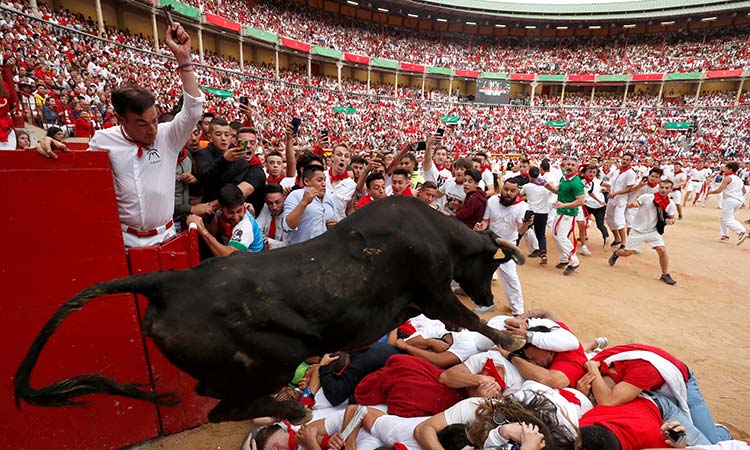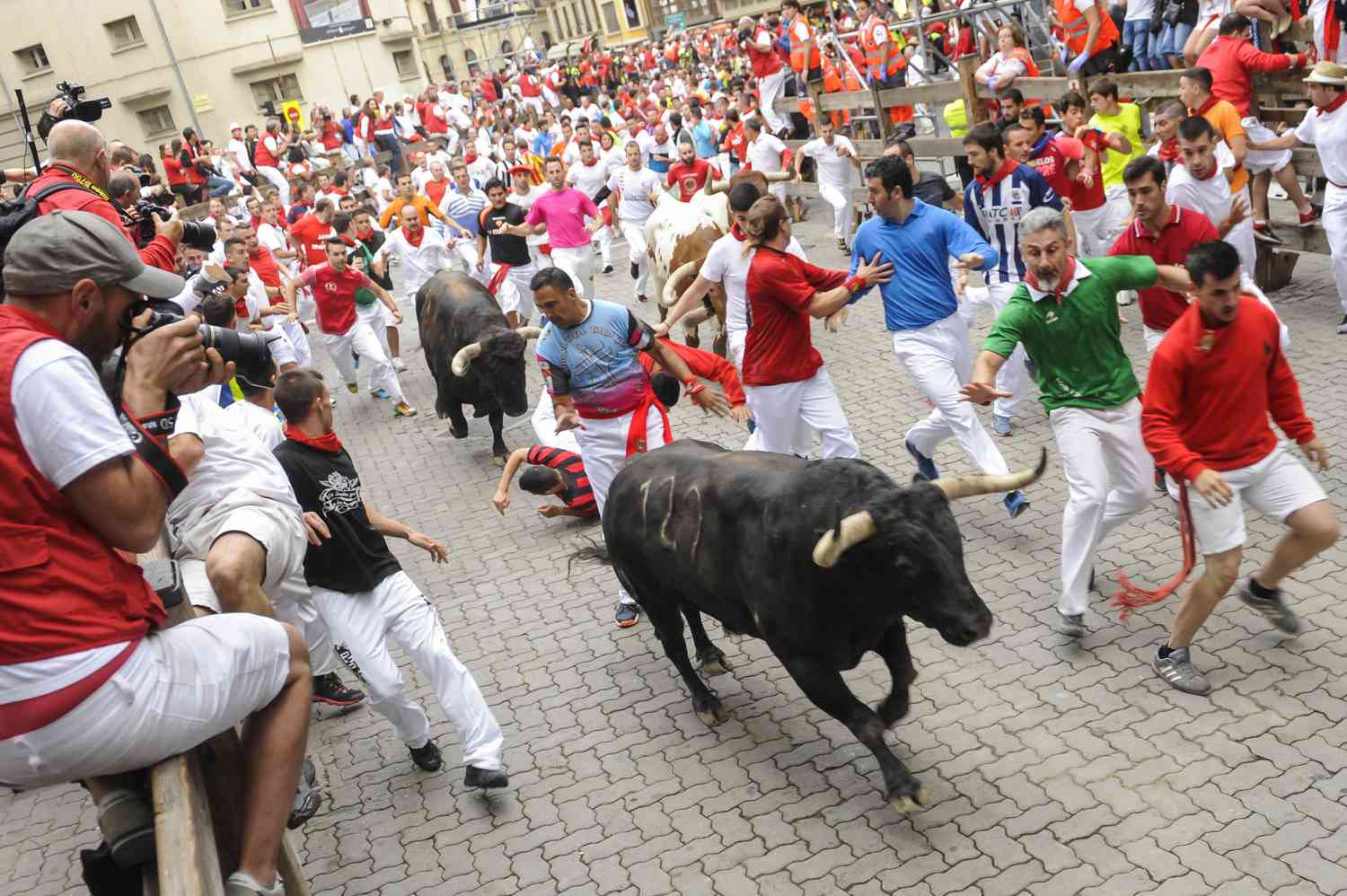The Running of the Bulls (Encierro in Spanish) is a traditional event where people run in front of a group of bulls that are let loose on a closed-off course of streets.
It’s held every year during the San Fermín Festival in Pamplona, Spain, from July 6–14.
- Purpose: The bulls are run through the streets from the corral (pen) to the bullring, where they participate in bullfights later in the day.
- Known for its adrenaline rush, cultural significance, and global media attention.
When & Where
- Location: Pamplona, Navarra, Spain
- Dates: July 7 to July 14 (daily runs)
- Part of the larger San Fermín Festival, which begins on July 6 with the opening ceremony.
Historical Background
Origins of the Encierro
- The tradition dates back to the 14th century, when bulls were herded through the streets from pastures to bullfighting arenas.
- Butchers and cattlemen would guide them, and daring youths started running alongside for thrill.
Tied to San Fermín Festival
- The San Fermín Festival honors Saint Fermín, the co-patron of Navarra.
- Originally a religious festival, it evolved over centuries to include bullfights, music, dance, and the running of the bulls.
- The connection between bull runs and the festival was solidified by the 16th century.
Global Fame — Thanks to Ernest Hemingway
- Ernest Hemingway’s 1926 novel The Sun Also Rises featured the Pamplona bull runs, making them famous worldwide.
- Hemingway’s writings romanticized the event’s excitement and danger, attracting adventurous tourists.
How the Running of the Bulls Works
Daily Schedule
- Starts at 8:00 AM sharp each day from July 7 to 14.
- The route covers 875 meters (about half a mile) through Pamplona’s old town to the Plaza de Toros (bullring).
- The run lasts about 2–4 minutes, depending on the bulls.

The Encierro Route
Key locations on the route include:
- Cuesta de Santo Domingo — The starting point.
- Town Hall Square (Plaza del Ayuntamiento)
- Estafeta Street — The longest stretch, known for speed.
- Telefónica and Alley to the Bullring — The most dangerous spots.
The Bulls and Runners
- 6 fighting bulls and several steer (oxen) guide the herd.
- Participants (mozos) run ahead of the bulls, trying to stay upright and avoid being gored or trampled.
- The crowd includes locals, experienced runners, and international thrill-seekers.
Rules & Safety Measures
- No intoxicated runners allowed.
- Runners must be over 18 years old.
- Must run in the direction of the bulls — no taunting.
- Respect the instructions of the security teams.
- No cameras or recording devices during the run.
Risks and Injuries
- The event is dangerous, often resulting in:
- Gorings
- Trampling injuries
- Occasional fatalities (16 deaths recorded since 1910)
- Medical teams are stationed along the route.
Cultural Significance
- Symbol of Courage & Tradition:
Seen as a test of bravery and a way to honor Pamplona’s traditions. - Part of Spanish Bullfighting Culture:
The bulls are run to the arena for traditional corrida (bullfighting) events later in the day. - Communal Festival Spirit:
The San Fermín Festival includes parades, fireworks, religious processions, and cultural shows.
Controversies and Criticism
- Animal Rights Concerns:
Animal rights activists criticize the event for its cruelty to bulls.- Protests are held annually in Pamplona by groups like PETA.
- Public Safety:
The danger to runners raises ethical questions about promoting such risky behavior.
Running of the Bulls Outside Spain
- Inspired versions are held in:
- Texas (USA)
- Mexico
- France
However, none match the scale, tradition, or authenticity of Pamplona’s event.

San Fermín Festival Highlights (Besides the Run)
- Chupinazo (Opening Ceremony):
Held at noon on July 6 — a massive crowd gathering with fireworks. - Parades of the Giants and Big Heads (Gigantes y Cabezudos):
Traditional puppet parades through Pamplona’s streets. - Daily Bullfights:
Held each evening at the Pamplona Bullring. - Fireworks, Music, and Street Parties:
The entire city turns into a festival zone.
Dress Code and Customs
- Traditional attire:
- White clothes
- Red scarf (pañuelo rojo) — tied around the neck
- Red sash (faja) around the waist
- The red symbolizes San Fermín’s martyrdom.
The Running of the Bulls in Pamplona is a unique blend of:
- Ancient tradition
- Religious homage
- Thrilling adventure
- Global spectacle
While it brings excitement, adrenaline, and festival spirit, it also faces criticism for ethical reasons.
Still, it remains a deeply rooted cultural event that captures the heart of Pamplona and attracts thousands each year.

One thought on “Running of the Bulls (Spain)”
Nice